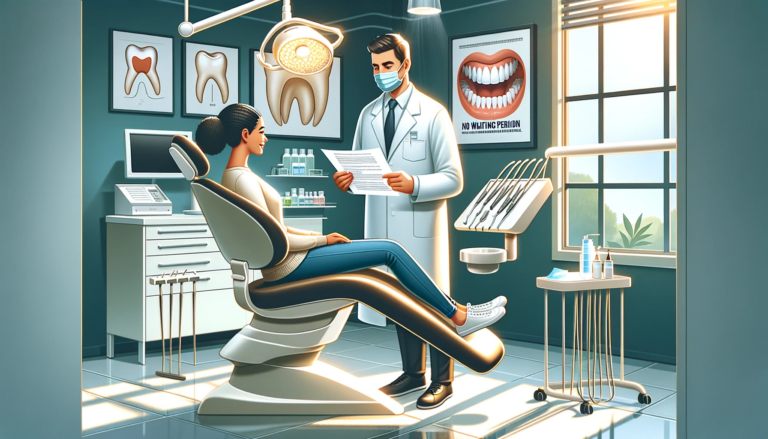How to Get Veneers Covered by Insurance?
In today’s world, a radiant smile can be a game-changer. Whether it’s for that perfect selfie, a job interview, or just feeling confident in daily interactions, having impeccable teeth is a desire for many. As with many cosmetic treatments, the cost can be a deterrent. This article delves into the world of dental veneers, their intersection with insurance, and how one might navigate the financial aspects of this popular dental procedure.
Does Insurance Cover Veneers?
Unfortunately, there’s no across-the-board answer here. Some policies always exclude them, since their primary purpose is aesthetic. Others evaluate this on a case-by-case basis. If your insurer takes the latter approach, it all comes down to how you and your dentist justify your veneers. With a solid case, you should get at least partial coverage (30–50% with most comprehensive plans).
- Cosmetic vs. Restorative: Most insurance policies label veneers as ‘cosmetic’, which often aren’t covered. However, when veneers serve a ‘restorative’ purpose, such as shielding a damaged tooth, there’s potential for coverage.
- Medical Necessity: If your dentist can justify the veneers as medically or structurally essential, you might secure partial or full coverage.
- Consultation: Engage in thorough discussions with your dentist and insurance provider. Ensure all required documentation is prepared.
| Aspect | Details |
| Cost Range | $250 to $2,500 per tooth |
| Typical Insurance Category | Cosmetic |
| Potential for Coverage | When deemed medically necessary. |
By being proactive and understanding your policy’s nuances, you can navigate the complexities of insurance coverage for veneers, inching closer to your ideal smile without a hefty financial burden.
Dental Insurance Alternatives for Veneers and Cosmetic Procedures
While dental veneers are a popular choice for enhancing one’s smile, they often fall under the ‘cosmetic’ category in insurance terms, leading to potential coverage denials. However, in situations where veneers serve a restorative purpose, such as shielding a chipped tooth, there might be a glimmer of hope for partial insurance coverage. If veneers aren’t an option due to insurance constraints, there are several alternative treatments that might be covered:
1. Fillings:
When a cavity is detected, the dentist removes the decayed portion and fills the void with a suitable material. Fillings, especially those made from dental resin, not only restore the tooth’s function but can also be aesthetically pleasing, blending seamlessly with the natural tooth.
2. Crowns:
For teeth that have undergone significant damage, crowns act as protective caps, enveloping the remaining tooth structure. Whether it’s a large cavity or a tooth weakened by bruxism, crowns made from various materials can restore function and prevent further complications.
3. Braces:
If misalignment is the primary concern, braces can be a viable solution. They don’t just mask the issue but address the root cause, aligning teeth to their optimal positions. This not only enhances the smile’s appearance but also promotes better oral health, reducing risks associated with misaligned teeth.
4. Clear Aligners:
For those seeking a more discreet solution to teeth misalignment, clear aligners offer the benefits of braces without noticeable brackets and wires. These removable trays provide the convenience of easy maintenance and a less intrusive appearance.
It’s crucial to consult with your dentist and review your insurance policy to determine the best and most cost-effective treatment for your dental needs.
Why You Might Consider Veneers?
Veneers are more than just a cosmetic enhancement. They offer a dual benefit:
- Aesthetic Improvement: Veneers can transform your smile, covering imperfections like stains, gaps, and misalignments.
- Tooth Protection: Especially for teeth that are chipped or have minor cracks, veneers act as a protective layer, preventing further damage and potential complications.
However, it’s essential to have a thorough consultation with a dentist to assess if veneers are the optimal solution for your dental needs.
Budget-Friendly Options to Consider
For those who might find veneers a bit out of their budget or are looking for alternatives, there are several other treatments to consider:
- Snap-On Veneers: These are removable veneers that fit over your natural teeth. They’re a quick solution to enhance the appearance of your smile, addressing issues like stains and gaps without any permanent alteration to your teeth.
- Teeth Whitening: A popular cosmetic treatment, teeth whitening can significantly brighten your smile. Various options range from over-the-counter kits to professional in-office treatments.
- Dental Bonding: This involves applying a tooth-colored composite material to the teeth to improve their appearance. It’s a less invasive and more affordable alternative to veneers.
- Teeth Contouring: If you’re unhappy with the shape or length of your teeth, contouring can be an effective solution. It involves reshaping the tooth by removing small amounts of enamel.
Frequently Asked Questions
Q. Are veneers always considered cosmetic?
While primarily seen as cosmetic, there are cases where veneers can be deemed necessary for dental health.
Q. How long do veneers last?
Porcelain veneers typically last 10 to 15 years, whereas composite-resin veneers last about 5 to 7 years.
Q. Are there any insurance policies that cover veneers?
Some insurance policies might cover veneers if they are deemed necessary for dental health. It’s essential to check with your insurance provider.
Conclusion
While veneers offer a transformative solution for many dental imperfections, their cost can be a significant concern. Understanding your dental insurance and exploring alternative treatments can help you make an informed decision. Always consult with a dental professional to determine the best solution for your specific needs.






